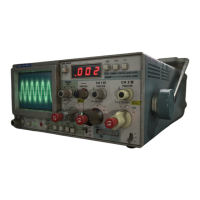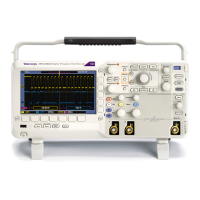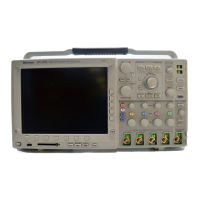How to ? Customize the display palette
NOTE. To define a custom color for the User palette, click the Edit button and follow the steps to Customize
Color Palettes (see page 801).
Customize the display palette
From the Display menu, select User Palette, or click the Edit button in the Colors tab of the Display
control window.
Overview
Use this control window to customize the color of your w aveform display.
To use
1. Click the Source drop-down list to select the waveform for which you want to change the color.
2. Select HLS from the Wfm Palette drop -down menu; then click in the Hue, Saturation, or Lightness
entry boxes and use the multipurpose knobs to adjust the percentage of each of these attributes.
3. If you prefer:
Select Temp (Temperature Grading) from the Wfm Palette menu to define areas of the waveform
with the highest sample density to appear in warmer colors (red shades) while the areas of lowest
sample density appear in cooler colors (blue shades).
Select Spectral (Spectral Grading) from the Wfm Palette menu to define areas of the waveform
with the highest sample density to appear in blue shades while the areas of lowest sample density
appear in red shades.
4. Click the Reset button to return the User palette to the default, if desired.
To activate the Display Setup Control Window, click the Setup button.
Behavior
Increasing the hue value changes the color to blue tones. Decreasing the hue value changes the color to red
tones. For best v iewing, set the lightness to 50. Higher numbers tend to wash out the color and lower
numbers can darken the color and make it difficult to see. Lower saturation values reduce the amount of
color displayed in the waveform. Higher saturation values increase the amount of color.
What do you want to do next?
Learn about changing the display colors. (see page 168)
666 DSA/DPO70000D, MSO/DPO/DSA70000C, DPO7000C, and MSO/DPO5000 Series
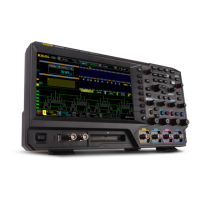
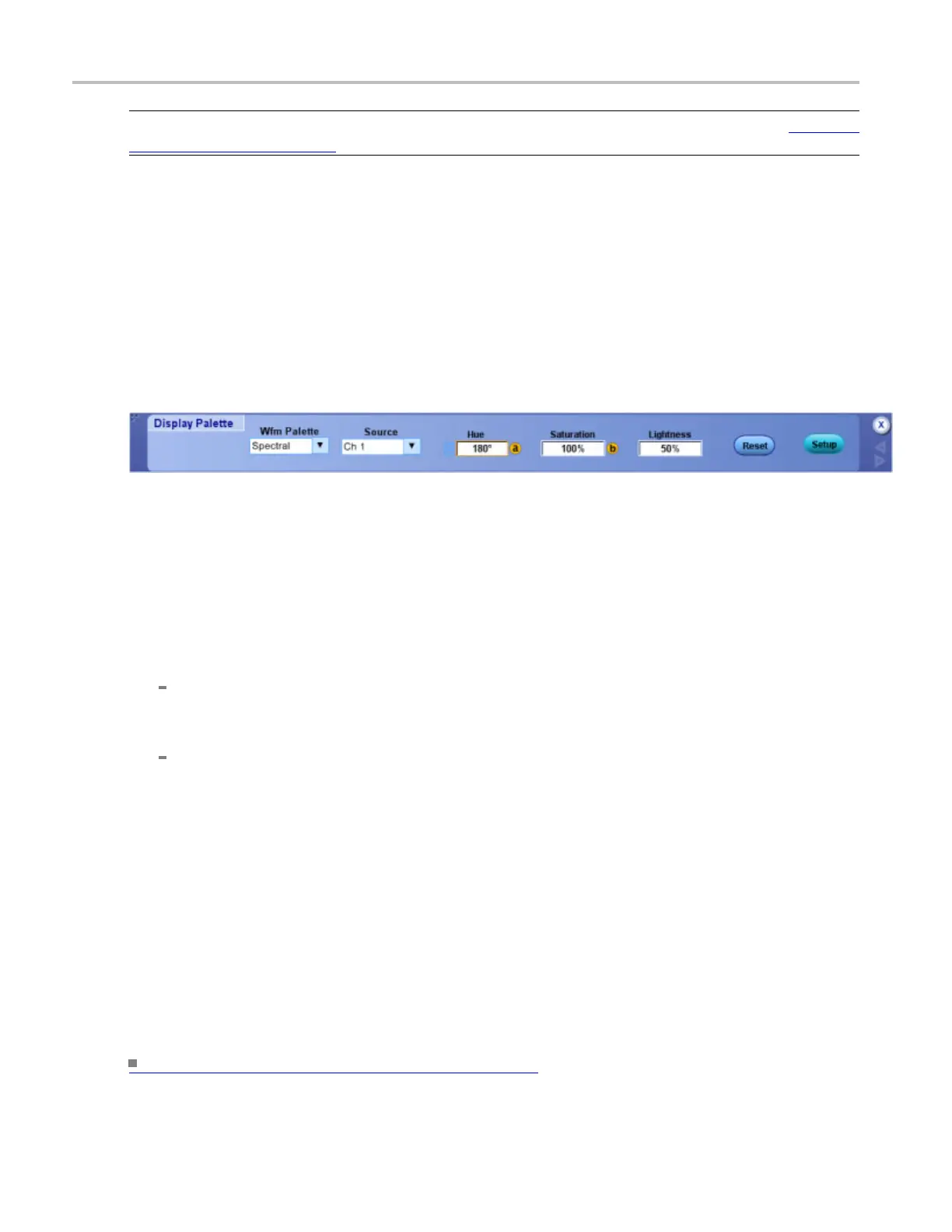